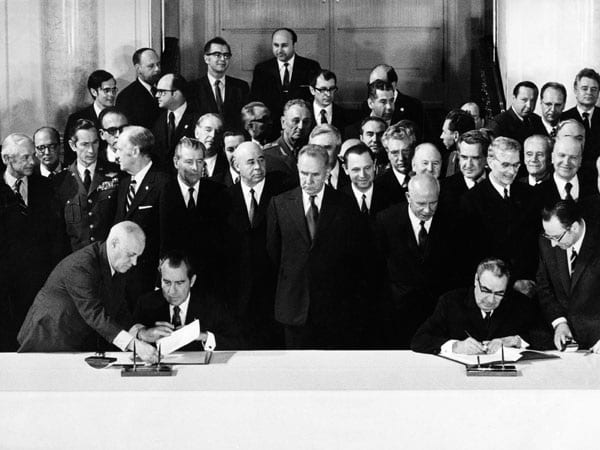
Richard W. Krohn
Abstract: The Strategic Arms Limitation Treaty (SALT) is a bilateral commitment between the U.S. and Soviet Union to promote stability and nuclear arms reduction. SALT I negotiations and the resulting Anti-Ballistic Missile Treaty placed the first concrete limitations on the production and use of nuclear weapons upon the U.S. and Soviet Union; hence, their success led to SALT II negotiations to discuss further reductions in proliferation. The disparities that exist between the nuclear forces of the two countries illustrate the need for such limitations. Both U.S. and Soviet Union are negotiating because simultaneous reduction of nuclear proliferation increases both countries’ stability and security. However, the two countries need to consider the international implications of SALT. Limits on deployment might undermine America’s commitment to its allies and NATO. Meanwhile for the Soviet Union, reduction of arms may increase the threats of Britain’s, France’s, and China’s nuclear weapons. Nonetheless, SALT II negotiations are expected to include provisions for several ceilings limiting nuclear arms, a protocol delaying and preventing development of new weaponry, and additional principles to be discussed in SALT III negotiations. A major concern of the two countries with regard to nuclear capabilities pertains to the parity or superiority of each other’s weaponry. Since neither country is willing to risk its security, both countries admit that the possibility of a nuclear conflict exists. As a result, both the U.S. and Soviet Union continue to maximize their strategic forces under the SALT limitations.
Key Words: SALT, U.S., Soviet Union, Nuclear Weaponry, Arms Limitation, Proliferation


